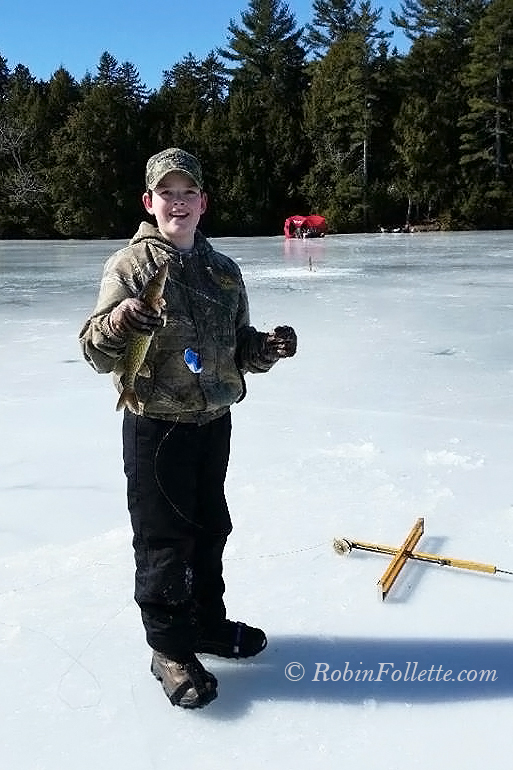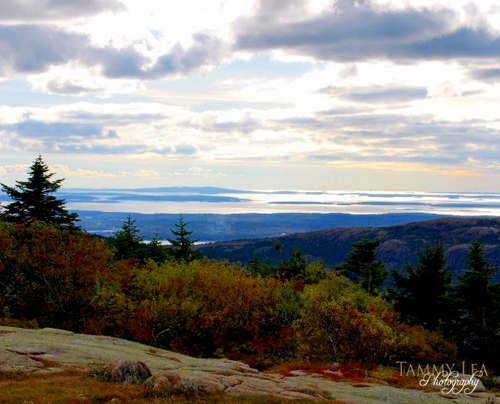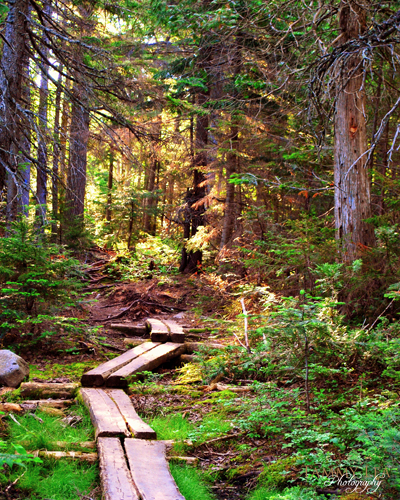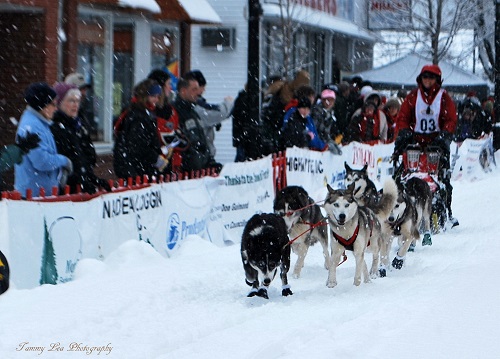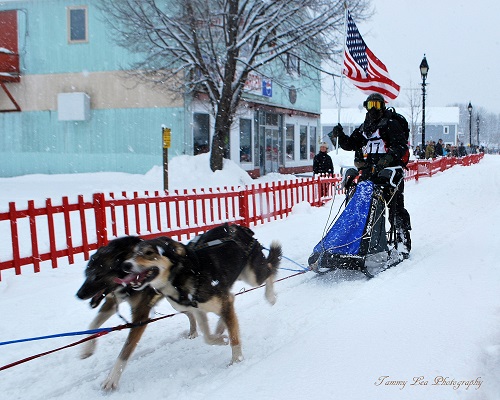We got home and settled after the exciting morning in the woods retrieving our eyas goshawk. We were both tired and sore from the long hike through wet, muddy trails. Dennis felt the burn from his tree climbing task, but there was still work to be done.

Building a goshawk nest
Our baby needed a new nest and had to be fed as regularly as a human infant. With no adult male and female goshawks present now to provide food and proper accommodations, guess who became Mom and Dad with the charge of caring for this new baby and meeting all its needs. Dennis cut branches and formed a nest base, then lined it with soft, brown cedar boughs. Our gos would be living in this nest for weeks, and our charge would include keeping the nest properly lined and free of left-over debree from feeding times. Poop in the nest…not an issue.
The dining table in the middle of our kitchen was lined with plastic, the nest bowl set in the middle, and he went to work building the “Poop Containment System” now fondly known by friends and family as the PCS. I’m REALLY thankful Dennis is such a smart and skilled craftsman. Yes, goshawks poop. A lot. Not neat and tidy style. They back their butts up to the edge of the nest and project poop across the room. FAR across the room, getting farther by the day the larger she gets. Yes, it’s gross, but it’s all part of the process and the commitment to “deal” when we chose to raise an eyas gos to hunt with.

Dennis and the eyas goshawk getting to know each other
The baby goshawk doesn’t eat grain or other plant based food. From the beginning, a hawk is a carnivore and requires numerous meals each day consisting of raw meat. Until they are old enough to learn to hunt and kill for themselves, it’s a chore for Mom and Dad. A typical goshawk diet consists of birds and mammals such as pigeon, quail, ruffed grouse, ducks, squirrels, chipmunks, hares and many other small to medium sized quarry. Food sources may be hunted during legal seasons, raised or purchased from a number of suppliers. Our freezer is being filled with a mass of red squirrels knocked out at our bird feeders, quail and pigeons we raise for the hawk.
I was well versed in raising and butchering my own chickens and turkeys, but I still had to get through the learning curve involved in processing small game. The first day I cut into a squirrel while Dennis was at work and unable to show me the process, I had a few “Ewwwww” moments. I kept cutting. When your baby is hungry and looking up at you with those big, round eyes, you suck it up and do what you must.

Processing a quail to feed AIM-9
We are feeding off of wings and carcasses to familiarize the gos with what “food” looks like in the wild. It’s a crucial part of her training that she recognize food and not associate eating with human hands and fingers, so we are very cautious in our approach when we feed. She can’t be allowed to see us placing food in her nest, because we value our fingers and have to look ahead to when she’s full grown, nearly 1000 grams in weight and can rip a hand apart with her beak if it looks food-like to her. No, raising and training a raptor is not for the sloppy, careless or faint of heart.

Eyas Goshawk feeding off of a squirrel carcass
While raising a goshawk intended to hunt successfully in cooperation with a falconer, socialization is extremely important. We placed our nest area in the busiest, central location in our home. The eyas gos doesn’t need to be shielded from human contact or tucked away in a dark, quiet area. Our kids, grandkids and dog, Tori, all work and live around AIM-9 on a daily basis. She spends as much time as possible in the middle of our living room floor, surrounded by newspapers to catch the projectiles.
(The AIM-9 Sidewinder is an infrared homing, short-range, air-to-air missile)

Liv and the Eyas Goshawk
We encourage the kids to pet her, handle her wings, tail and feet gently with only one cardinal rule – they cannot pick her up. It is an insult and sure-fire screaming match for the gos to be picked up and must be avoided as much as possible in her handling. She is being raised as naturally as feasible to become the stealth killing machine she was born to be. I’m so eager to see the amazing creature she grows into in the weeks and months ahead!
I have shared in previous articles the reasoning behind choosing a female goshawk as opposed to a male for better hunting capabilities. After an unsuccessful attempt to train and hunt with a tiercel, Dennis was adamant in choosing a female eyas this year. We chose to go the route of sending off DNA samples to a biotech lab for accurate sexing so there was no guess-work involved. We waited impatiently between Saturday and Tuesday afternoon…very impatiently! I checked, re-checked and checked again for the results to be posted online. We kept thinking and talking about that one little baby gos we left behind in the nest, surrounded by the wild and so many predators. What if…
What if the eyas we brought home was male? What if the little nestling turned out to be the female and we went back to find her gone, the nest empty. What if Jimmy G went home with the only female and our baby AND the nestling were both male? What would be our Plan B? Would we return a tiercel to the nest and just try again next year or would we attempt another training with a male? In dealing with nature, anything is possible and nothing at all is predictable.
Around 5pm, just before going outside to watch the girls work with the horses, I took one more look at our account online at Avian Biotech. There it was! OMG, THERE IT WAS!
Dennis: Male
Jimmy: Male
Nestling: Female
I could hardly breathe on my way down to the pasture to tell Dennis the news. There WAS a female in that clutch, and she was still 35 feet up that Ash tree in the nest that I only hoped was still intact and safe for her. I told Dennis with tears in my eyes, and he immediately flew into action. It was nearing dark, but we weren’t wasting another day getting back to that tree. We loaded the climbing gear and the tiercel male we’d been caring for and headed to the woods. We KNEW it. We just had a feeling that was going to be the case after the visual IDs left us all thinking the chicks we took were probably male.
Of course, this nest was down the longest, most difficult hiking trail in our inventory of nest sites. It was a long, hard walk that was reallllly slow going for me. I told Dennis to go ahead. I’d catch up. He needed to gear up and could be ahead of me and ready as soon as I reached the tree. I mushed on behind him, quickly losing sight of him as I battled thick masses of mosquitoes and even thicker, deeper mud. My Mucks sunk up so deeply I had to wiggle and pull my feet out of the ground at times. I don’t think any of the times past that we’ve walked that particular trail took half as long as it seemed to take that day, knowing (hoping) our little huntress was waiting at the end of the walk.
I finally reached him, all ready to climb, ropes around the tree holding him securely. He headed up. The female goshawk was circling and kakking at him before his feet left the ground. That was a great sign! I was able to photograph her for the first time that day. She’s been super stealth all other times we’ve heard and caught glimpses of her. That day she wasn’t screwing around!

AIM-9’s Mama is a smart, fierce, absolutely gorgeous goshawk!
He reached the nest to find the baby there, our little female eyas goshawk! He was securing himself to the tree to begin the swapping of babies, Mama Gos circling and screaming at him. We both heard her coming in, and I was trying to get my eyes and camera on her when suddenly, there she was!
Dennis had just turned to see her coming at him in time to get hit, head on. She hit him with such force that he saw stars, and I heard the thud. I couldn’t get my camera up fast enough, but breathed a sigh of relief that he was still securely attached to the tree. If he had been untied during that impact, I’m certain she’d have knocked him out of the tree. So there it was! He’d been hoping for some battle scars to take away from this experience, worn as badges of honor. Boy, did he get rewarded that day!

Dennis after goshawk attack while retrieving our female eyas gos
We brought home a prized female goshawk. She came to us through blood, sweat, tears and miles upon miles of hiking, hunting and priceless time spent together in the woods. I’m settling well into the task and joy of raising a special hunting partner with this outdoorsman of mine leading the endeavor and training me and her both as we go along. She is already growing and learning incredibly fast! What an adventure!

AIM-9 at 16 days
Till next time…




















